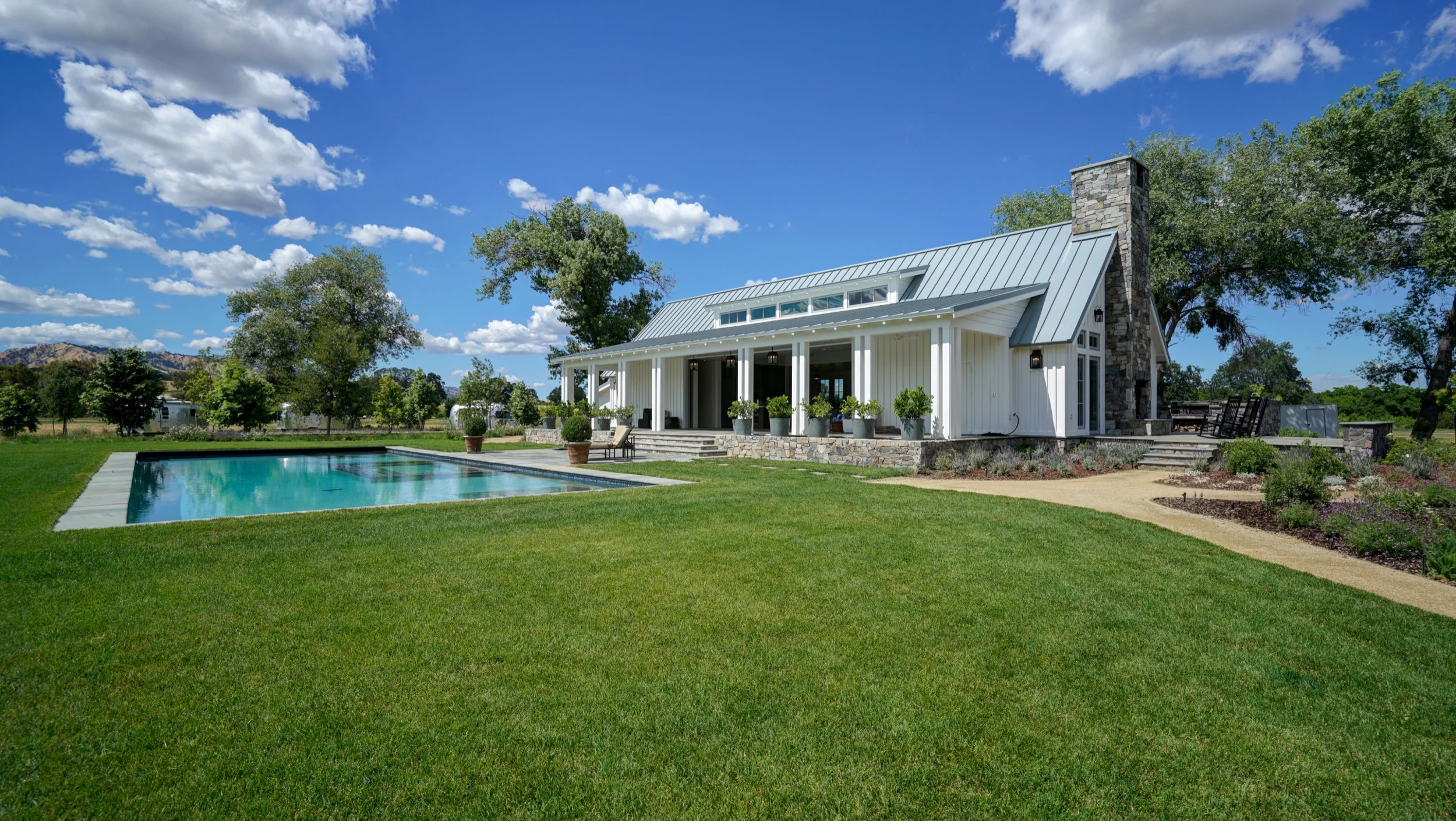some of our work
Projects
Apparently Jimi Hendrix, Paul McCartney and Napa’s former Food City center have something in common. All three were “born” in 1942.
The shared birthdate is noted on large signs newly installed at the former Food City shopping center, located at the corner of Jefferson Street and Old Sonoma Road. The original anchor tenant was the Food City market.
“Food City is being reborn,” reads a new Food City Napa website. “We’re getting back to our roots as a food-centric experience and neighborhood gem,” it reads. “Eat drink socialize. Are you in?”
“We thought it was a great opportunity,” Scott Goldie, partner at Brooks Street, said at the time. Brooks Street and Noble House Hotels & Resorts co-own the Napa Valley Wine Train.
“We want to be really thoughtful about what we do” at the center, said Holcomb. The developer has been involved in a number of other Napa projects including the Borreo building rebirth at Soscol Avenue/Third Street and retail redevelopment on Second Street.
Kelly & Morgan Architects, Planners, and Project Management is leading the entitlement and design effort for this exciting revitalization of this historic South Napa neighborhood treasure.
Working as design partners for several years on the Middle Green Specific Plan, Brendan Kelly, AIA and Amie MacPhee, AICP (Cultivate-Ca.com) produced one of the most progressive land preservation plans in the SF Bay Area. Working with neighborhood groups and sometime intransigent landowners, the plan preserves +1800 acres of open lands, working ranches and vineyards, and still allows for three dense neighborhoods (approx 400 homes) in a region where quality housing remains in short supply. Approved unanimously by the Solano County Board of Supervisors in 2017, the Plan remains in effect as the de facto Zoning Ordinance for this area of the County.
Kelly + Morgan Architects and Cultivate Planners and Landscape Architects have already begun entitlements and preliminary architectural and landscape design on the first neighborhood center focused around the local winery, GV Cellars.
Preamble from the MGVSP:
Middle Green Valley is unique and spectacular. The City of Fairfield, to the south, and unincorporated Solano County to the north, have continued to entitle subdivisions, while Middle Green Valley has remained largely undeveloped agricultural and open space land in the center. There is long-standing conflict between the open space desired by neighbors and development rights desired by landowners. The landowners of Middle Green Valley are under substantial pressure to both preserve their rural culture, even as the basic economics of agriculture are eroding the financial viability of their lands, and to develop their property to realize the economic benefit of their property. Many of the landowners, some whose families have cultivated the land for more than 150 years, wish to realize the development value of their land while, at the same time maintaining the integrity of the open space, agricultural productivity and farming legacy. In accordance with the goals and policies of the General Plan, the County saw an opportunity to try to resolve this conflict, and avoid the piece-meal subdivision that would inevitably occur in the absence of a comprehensive plan. At the same time, the County also wants to ensure that the houses developed under the plan are in keeping with the unique setting: practical, clustered, rural in character, sustainable, and complementary to the existing landscape. At significant cost and with no guarantee of success, the Solano County Board of Supervisors proposed a Specific Plan process for this part of Green Valley as part of the updated 2008 General Plan. That General Plan, with landowner and neighbor support in Green Valley, was passed with a 65% approval in November 2008. In January of 2009, the County appointed Hart Howerton, and consultant team to work with a Citizens Advisory Committee (CAC) which was divided equally between landowners and nearby residents. Their joint task was to produce a plan that meets the goal and policies for Middle Green Valley set forth by the General Plan. This Specific Plan is a result of that successful, collaborative effort. Like all successful designs, this Specific Plan captures a moment in time when community representatives were able to develop a shared vision for an agriculturally-centered community founded on conserving a remarkable landscape, based on a stewardship ethic. No plan can be perfect, however, and many people spent countless hours discussing and ultimately compromising, where necessary, for the long term benefit of the whole area. This was an extraordinary opportunity for neighbors, landowners and local agencies to have an open dialogue about real long-term interests, and understand how financial, environmental, and cultural aspects of a community plan can fit together.
This a structure nearing completion in the beautiful wide open farmlands of Yolo County, CA. Built as a family retreat, it combines the proportions of western porch architecture with the classic lines of an elegant farmhouse. Looking over vineyards and orchards, the shade of the building provides easy shelter from warm days and chilly nights. Completion anticipated in the summer of 2019.
It has become something of a cliché. California wine country residents vacation in Tuscany, fall in love with the irregular rooflines and warm colors of the villages, and come home to build their own version in Northern California’s Mediterranean climate. The wine valleys are speckled with pseudo-Tuscan villas, some bearing old roof tiles shipped from Italy, others painted in eye-catching shades of ochre and terra-cotta that will need years of weather before they begin to fade into the landscape.
Jean-Marie and John Kelly, owners of a large parcel of land in the hills west of St. Helena, also went to Italy and returned enchanted by that country’s village architecture. In building their paraphrase of Italian country style, however, they skipped the more obvious clichés and kitsch. Although the shapes of their residential complex certainly hearken back to Europe, an elegant palette of materials and refined details pay homage to the essentially Californian aesthetic of architects like Bernard Maybeck and William Turnbull.
The Kellys’ residence is perched on a narrow bench of land between sloping vineyards and a deep, thickly wooded ravine. Hardly more than three miles away, people are shopping for shoes and inspecting menus on St. Helena’s busy Main Street, but the Kellys inhabit a different world, where hawks float in the silent air and there isn’t another house in sight. Besides their buildings, the only sign of civilization is the neatly tended rows of merlot grapes that wind around the curving hillsides.
Working with John’s nephew Brendan Kelly and his wife Kerry Morgan, both architects, the Kellys conjured up buildings that embody the strength and tranquility of the setting. At first glance, the main part of the complex seems to be a single structure, but it is actually an assemblage of three units.
The first thing that grabs the eye is the four-story tower, as sturdy and imposing as a medieval fortress. From a ground-level wine-tasting room, a spiral staircase leads up to Jean-Marie’s painting studio, then to John’s office and, at the very top, to an open-air sleeping porch. Breathtaking views of the vineyards and the hillsides can be seen from each level.
The master bedroom and bath occupy the one-story building next door. From their private aerie, the Kellys walk down a few steps to a wide, trellis-shaded portico that runs along a rectangular building containing the kitchen, dining room, and library. A couple of hundred feet away, a guesthouse has two bedrooms, a sitting room/kitchen, and a low-ceilinged attic designed as a grandchildren’s play area.
Brendan Kelly and Kerry Morgan brought everything together by using a remarkably limited palette of materials. Every floor, inside and out, is either polished gray concrete or wood. Every wall, inside and out, is a warm gray stucco. The consistency of materials redefines the familiar term indoor/outdoor, erasing the boundary between interior and exterior textures. The stucco walls are interrupted by panels of redwood that reference the traditional look of sea air–weathered California barns. “I knew there was a way to abstract the Northern California barn buildings without relying on the historicism of Spanish and Italian architecture,” Brendan explains.
This video was taken by various participants and produced in it’s final form by BONE Structure, a Canadian company specializing in supplying pre-fabricated steel structural systems for custom residential projects. They hosted an Open House during May 2019 where the public was invited to see the home under construction. Mikara Construction, a local Santa Rosa builder, is the General Contractor. Kelly + Morgan Architects is the architect and many talented subcontractors are busy helping finish the project during the summer of 2019.





